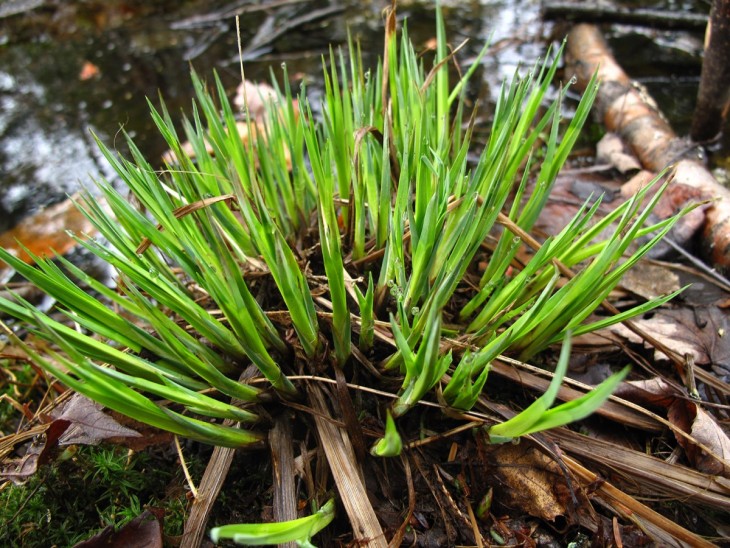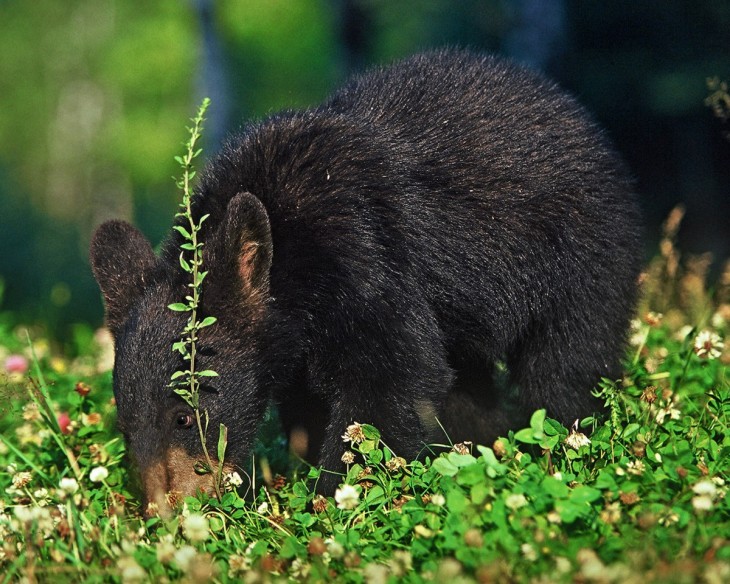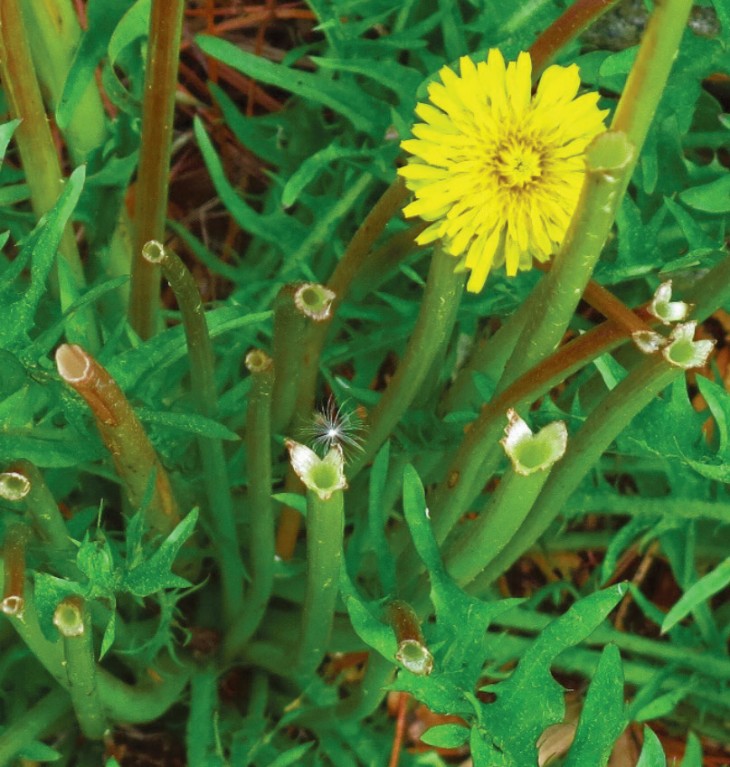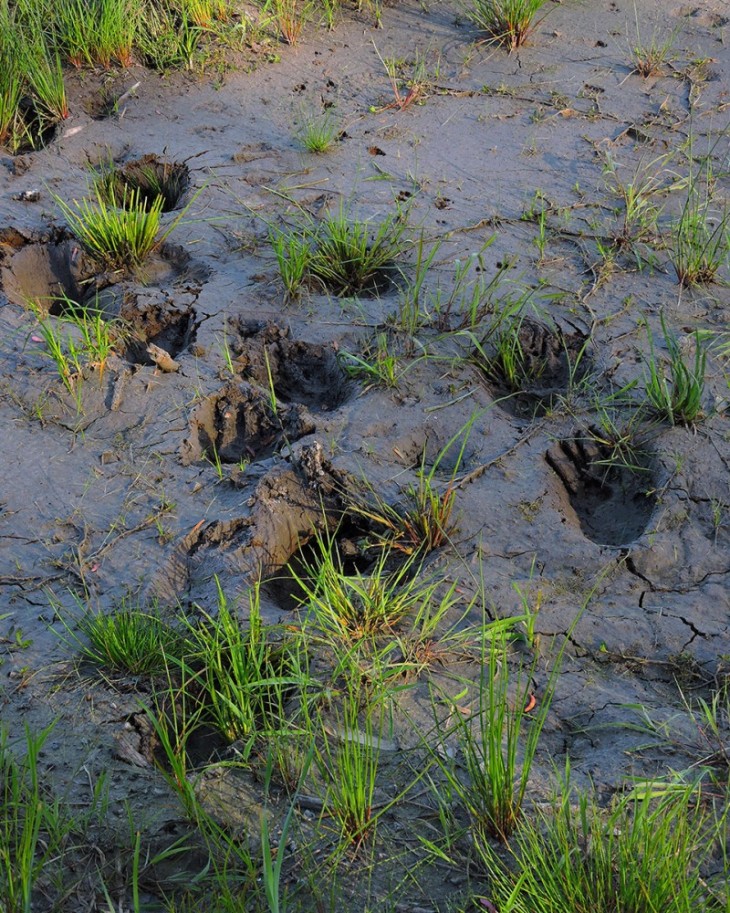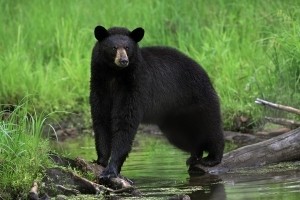By the end of April, black bears have shrugged off winter’s dormancy and are getting hungry. They may get lucky and discover a winter-killed deer and get to indulge in its valuable protein. More often, however, they glean tiny foodstuffs, breaking willow branches and climbing aspens to reach the catkins, or even slurping from a pond’s surface to eat concentrations of minute springtails. In sunny openings where things are greening up, the tender new leaves and stems of succulent vegetation are voraciously grazed by eager bruins.
